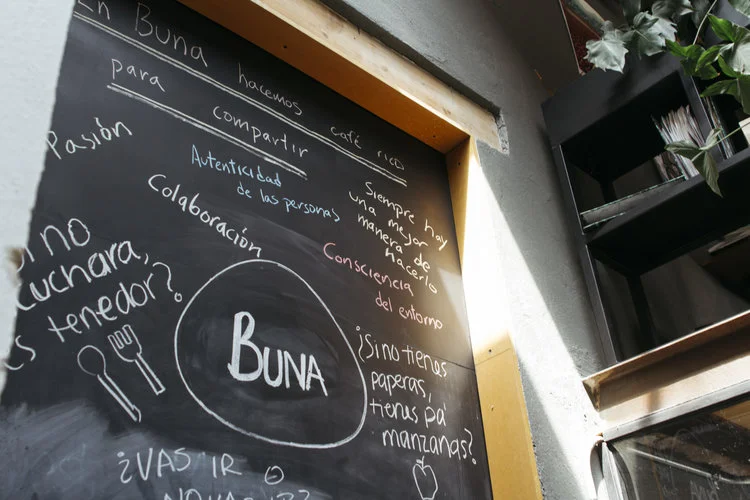Years back, I met the team behind Kalsada and became quite familiar with their work in transforming coffee farmers’ lives. I joined them on several farm trips to Benguet, with different companions each time. One particular trip stood out where we put out improvised insect traps in a farm severely affected by coffee berry borer that I became really curious -- what was the agriculture and science behind this?
Little did I know then, I’d be joining the team soon after my move back to Mindanao almost two years ago. I traded the confines of a systematic and exacting approach of the lab work that I was used to, with that of an open-ended community driven work where there are no standard formulas or technical specifications. Instead, I had to actively listen, observe and be open to possibilities.
Learning how to be "open to possibilities" while harvesting ginger with Auntie Melia.
Having been born and raised in the agricultural landscape of Zamboanga del Sur, I understood early on that farming was a serious matter. My parents own a small integrated farm planted with coconut, cacao and a good mix of fruit trees. During middle school, I remember playing under the canopy of robusta coffee trees that my parents used to grow in our backyard. And in the mid 1990’s when the price of coffee reached rock bottom, a buyer came and asked to purchase the cherries. My mother created an agreement with the buyer: they could get the cherries if they harvested it themselves.
Our family backyard, where pomelo and rambutan replaced the coffees.
My work mainly involves community partnerships in Mindanao. The first community we partnered is in Pigtauranan, located in the southwest part of Bukidnon, near the border of Lanao del Sur. The community is at 1000 meters above sea level, sits on the foothills of Mt. Kalatungan mountain range and is home of the 35-hectare Lake Napalit. Going to Pigtauranan, there is no signage and your phone’s only functionality are limited to camera, calculator and flashlight. If you’re looking to disconnect from the rest of the world and reconnect with what is present and in front of you, you can do it here, come and visit and keep me company during harvest season!
Mornings in Pigtauranan
It was through several visits and community consultations between 2015 and 2017, were we then converged onto the collaboration. In preparation, we designed and conducted specific workshops and targeted trainings to standardize processes. Together with Bayanihan Millenium Multipurpose Cooperative (BMMPC), we created the first community mill and started processing coffees.
Coffee trees are known to adapt well in different terrains in Pigtauranan, you can find them in the farthest and steepest locations that usually take 2-3 hours to get to. With no actual roads leading to the coffee farms, you can either go by foot, a carabao or horse ride. Due to the lack of infrastructure, making it almost impossible to pick and process on the same day, we experimented on the processing. Taking into consideration the varying length of the in-cherry fermentation, the coffees we processed as washed, honey and natural. For the unfamiliar, coffee cherry fermentation is a metabolic process that starts right after picking, and the extent of fermentation is highly dependent on temperature and level of ripeness. Because we wanted to explore the cup potential of the different varieties available in Pigtauranan, we sorted them accordingly. Understanding the interesting occurring reactions inside the coffee cherry is something that’s very relatable to me, even in the molecular level.
Cherry delivery!
Harvest season came late this year and when the first cherries of the season were finally delivered, it felt like receiving a sack of Skittles! From the immature green to the overripe dark reddish black and everything in between. Through constant reminder and encouragement, the cherry ripeness significantly improved and I would hear farmers teaching one another the “Kalsada way” - from picking to sorting and processing.
“Christmassy” first delivery
Ripe and sorted second delivery
Processing coffees and translating the flavors into the cup is for me the most exciting. My work in Kalsada afforded me a laboratory without a wall or division. I was reunited with my long time subject organic chemistry through the so-called fermentation of coffees. Equipped with a good background in fermentation, crafting and manipulating processes were easier. It was also an opportunity for me to share to farmers the science behind it, including the practical application like knowing the things they can control, choosing the appropriate process and even predicting results before they happen. I tried to instill to the community members I was working with that specialty coffee doesn’t happen because the cherries rolled over and somehow did some magic chants, but that they as farmers and producers make it happen.
My workstation with a view.
This first year working in the community maybe the hardest and the most challenging as our harvest in Pigtauranan was low and living and working in a community was a new experience for me. With less volume to handle, managing the mill was easier and we got to focus on specific processing experiments. The road to transformation will be uphill and a bumpy ride, but our presence and integration in the community is slowly breaking the wall of doubts and hesitation. After all, the journey of Philippine specialty coffee is taking a leap for a bigger and brighter possibilities, and I am going forth with it.
Ivy Soon, Kalsada Field Officer









